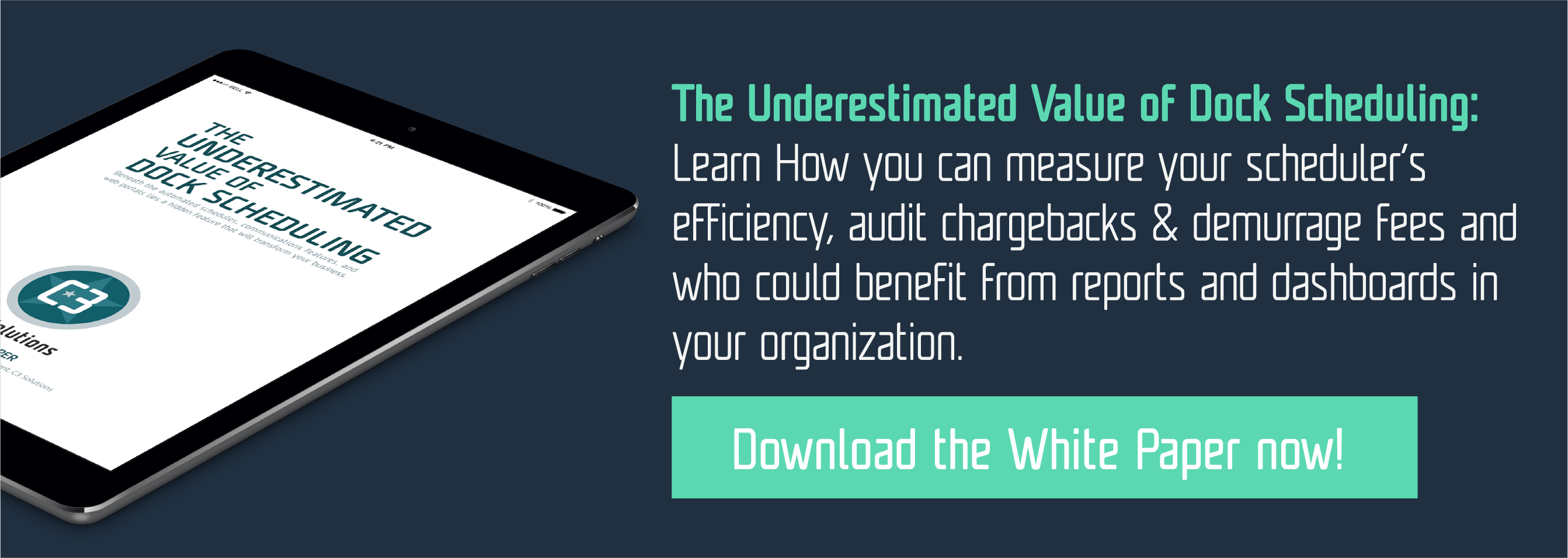Why Retail Supply Chains Look to Dock Scheduling Technology to Remain Efficient in Freight Deliveries

As companies move to embrace remote management capabilities and rise to the meet challenges of the e-commerce boom, the need for more efficient, faster dock operations will increase.
Unfortunately, speed for the sake of speed and failure to consider to plan for increased dock activity properly will lead to inefficiencies and significant risks.
Aside from the obvious problems with inefficient, poorly designed dock schedules, stressed workers and a lack of a plan could lead to safety risks and added costs for retail supply chains. Take a moment to think about what happens when the dock enters a chaotic, unplanned state. Workers begin to cut corners. The staff will try to move faster. It’s the perfect brew for an incident, and even still, poor planning can lead to stock-outs, upset customers, and other added expenses. With that in mind, retail supply chains are starting to realize dock scheduling technology’s potential to streamline operations and avoid these risks. And supply chain leaders need to know the causes of inefficiency, how dock scheduling technology makes this possible, and a few tips for success.
Causes of Inefficient Freight Deliveries
 Inefficient freight deliveries have an inevitable component. According to Parcel Industry, “There is one constant across all systems involving people: mistakes will be made. Categorize defects as an error in the system, not an issue with its users. Fortify your fulfillment process by creating procedures that minimize opportunities for human errors. Rely less on human decision making and more on standardized processes.”
Inefficient freight deliveries have an inevitable component. According to Parcel Industry, “There is one constant across all systems involving people: mistakes will be made. Categorize defects as an error in the system, not an issue with its users. Fortify your fulfillment process by creating procedures that minimize opportunities for human errors. Rely less on human decision making and more on standardized processes.”
However, the perceived inevitable outcome is the result of several other issues too:
★ Lack of visibility.
★ Lack of control.
★ Limited staff.
★ Smaller IT services budget.
★ Rising freight costs.
With these problems remaining, it stands to reason that improved visibility, control, staff management, IT resource allocation, management of transportation, and right staff-to-work ratios can avoid inefficiencies. That’s where dock scheduling technology comes into play.
Dock Scheduling Technology Enables Better Inbound Management
Dock scheduling technology overcomes the barriers to efficiency by bringing harmony to all the nuances of managing a dock and yard. Remember that it is not solely the dock or yard that impact overall operational efficiency. For example, poor dock scheduling could contribute to severe bottlenecks in stock put-away and lead to additional delays in receiving subsequent trucks. As explained by Logistics Viewpoints, “Being able to apply tactical changes within clearly defined and communicated schedules is key to gain full visibility on loading and unloading. A dock scheduling system will allow for proactive handling of deviations from the day-to-day operations that may be caused by unexpected circumstances.”
And multiple companies have successfully been able to maximize efficiency by gaining the level of detail and visibility needed to know which trucks will arrive, when, and what equipment should be available for use. It all comes down to the number of docks and trucks that arrive at the same time. By centralizing communications and eliminating missteps, companies realize efficiency, avoid stock-outs, and successfully prevent detention fees or dwell time charges.
Tips to Increase Dock Management
Improving dock management sounds simple enough. It involves more visibility and control over the schedule. However, that’s not necessarily reality when managing a dock across dozens, if not hundreds of suppliers, scores of locations, and endless demands for faster loading and unloading. To achieve increased dock efficiency, managers should follow these tips:
1. Implement a centralized, cloud-based dock scheduling technology
2. Give drivers, carriers, and LSPs autonomy to self-schedule appointments
3. Integrate the software with the labor-management system to optimize available slots and avoid bottlenecks
4. Avoid 100% bookings to accommodate last-minute changes within the driver delivery schedule
5. Connect the dock scheduling technology with the WMS and TMS to plan deliveries or pickups as quickly as possible
Unlock Stronger Growth and Lower Dock Bottlenecks With the Right Dock Scheduling Software and Partner
The right dock scheduling software should go beyond the limits and functions of the WMS, TMS, or other supply chain systems of record. It must connect the full supply chain lineup, especially as drop-shipping and cross-docking become more commonplace. It should leave zero doubt as to the certainty of planned arrivals and departures. And it should have a competitive cost. Fortunately, using a software-as-a-service (SaaS) based dock scheduling technology, such as that offered by C3 Solutions, can achieve all these goals, apply all the tips above, and derive more value in a single step. Request a live demo to learn how C3 Solutions dock scheduling software can improve your supply chain now.

